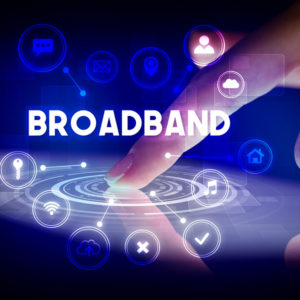The Federal Communication Commission’s biennial Communications Marketplace Report shows that people choosing broadband is much more of an issue creating a digital divide than access to high-speed internet.
The data show that wired or wireless broadband services most of the country. U.S. 5G wireless covers about 93 percent of the population. About 94 percent of the population is passed by fixed terrestrial networks offering speeds with 100 Megabits download and 10 Mbps upload, well above the broadband standard.
However, the FCC’s report shows that the percentage of people who have adopted broadband is much lower. In all, about 90 percent of Americans subscribe to an internet service. The FCC found that less than 80 percent of Americans subscribed to a fixed terrestrial broadband service, although many more have access to it.
Data from the FCC report indicates income is a significant factor, with 42.4 percent of residents in the lowest quartile median household income at the county level subscribing to fixed broadband compared to 73.1 percent of the richest one-quarter of residents.
The FCC further found that the percentages drop precipitously for “gig” service subscriptions, with just 12.2 percent of the highest income quartile and 8.8 percent of the lowest income quartile choosing this level of service. The low numbers for the richest Americans indicate this is less of a matter of access and more a matter of residents declining to pay more for internet speed. Given the push for gigabit-level speeds around the country — especially as a rationale for creating government networks — this is an important distinction.
The National Telecommunications and Information Administration’s (NTIA) Internet Use Survey also indicates it’s not just poverty that is causing the digital divide. That report found that 58 percent of residents who don’t subscribe to broadband have no interest in doing so. Only 18 percent of survey respondents said the price was the most significant factor.
NTIA’s findings make sense because studies have shown that broadband in the United States is affordable. For example, the International Telecommunication Union found that fixed broadband prices represent about 1 percent of the average income, much lower than in many other countries.
The FCC’s report supports the level of connectivity shown on the National Broadband Map, which indicates that the private sector has been successful in bridging the digital divide. Investment continues to increase, with CTIA reporting that wireless providers’ capital investment increased from $29.9 billion in 2020 to $34.7 billion in 2021, while USTelecom reported that fixed providers’ capital investment reached $86 billion in 2021, up from $80 billion in 2020.
Although there will be plenty of challenges to the national map at the local level, overall, the map and the FCC’s marketplace report show that America is connected to broadband. That report strongly indicates the digital divide is less about access and more about choice.

